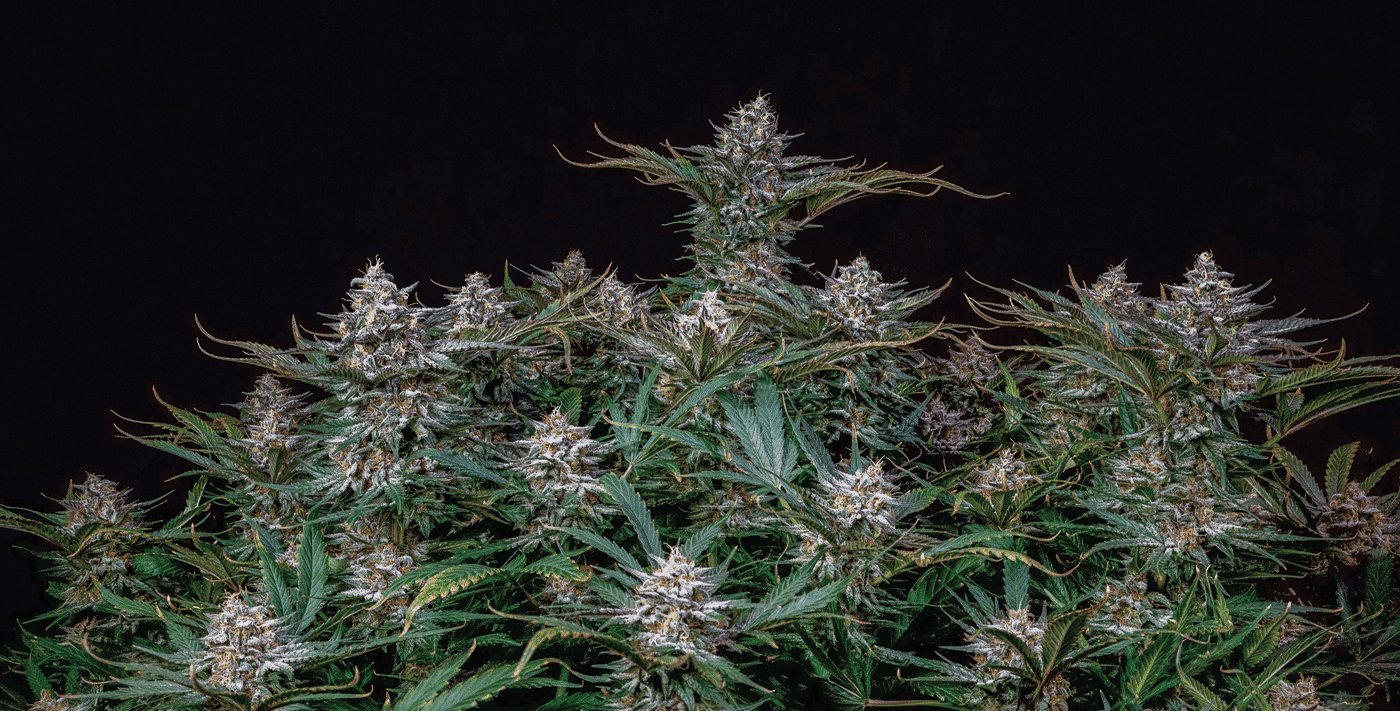High stress training, or HST, refers to a series of practices well-known to cannabis growers for increasing yields. Physical alterations made to cannabis plants during their growth cycle, much like in low stress training cannabis techniques, produce growth hormones like cytokinin, auxin, and gibberellin. These lead to altered development of the affected structures, resulting in an increase of biomass and production of secondary metabolites. Simply put, when plants are exposed to stress, they kick into survival mode and change growing behaviors which can result in increased yields and more potent plants.
Cannabis plants naturally grow in a shape similar to a Christmas tree, with tall, vertical shoot growth. In nature, this shape is adapted to the environment to optimize light exposure from a light source (the sun) which changes angles and color throughout the day. For indoor grows with stationary lights, light penetration needs to be artificially optimized for the entire plant. This also means that growers can take advantage of the cannabis plant’s ability to naturally heal itself to manipulate the growth into producing the highest yields.
HST Techniques
HST techniques are often combined with low-stress training cannabis methods such as the classic “sea of green” or “screen of green” techniques to maximize yields. Defoliation is another common practice that allows for optimized light exposure and increased airflow by removing excess leaves that can trap contaminants and shade other leaves. Both of these techniques are easy to implement for beginning growers and have enormous benefits when it comes to cannabis cultivation.
The most common high-stress practices are topping and fimming, two similar techniques that involve the removal of the top part of the plant to encourage more growth in the lower branches. The apical meristem, represented by the topmost bud site on a cannabis plant, is responsible for generating the cells that will differentiate into the various structures at the shoot, similar to stem cells in animals.
Auxin, a growth hormone in plants, is produced from the apical meristem and inhibits the growth of the lower branches. When the apical meristem is damaged or removed, the balance of growth hormones in the plants is shifted, and the lack of auxin production disrupts the so-called “apical dominance,” resulting in greater horizontal growth. These plant training techniques are essential in shaping the growth of cannabis plants.
Supercropping
More experienced cultivators might employ supercropping, a plant training technique that involves intentionally damaging the tissues of a branch to redirect the growth and encourage more bud development. By creating a minor injury to the branch, the stress response stimulates the production of hormones that promote cell division and growth. If done correctly, supercropping can provide a more even canopy, promote lateral growth, and result in some interesting-looking plants.
The outermost layer of a cannabis branch is a waxy epidermis that protects the interior vascular tissues of the plant. When supercropping, take care to not cause too much damage to the exterior, as any openings in this outer layer can invite pathogens. Often growers will gently squeeze or massage the branch to make it more pliable before bending.
In some cases, it’s good practice to support the branch with a trellis or stake as the plant heals. Eventually, the broken area will become a dense callus that will increase the structural integrity of the plant while the vascular tissues heal and grow into the new shape.
Supercropping can be done during the vegetative stage once plants are more robust, roughly one to two weeks before flowering, though the timing can vary. There are some more experienced growers who will super crop plants throughout the flowering stage, but this can be risky and not recommended if you’re new to this technique. As with most HST techniques, the quality of the environment and the health of the plants will determine how well they bounce back from these cannabis cultivation practices.
Mainlining
Mainlining a cannabis plant is another high-stress technique that involves a similar principle of redirecting growth and increasing light penetration and airflow. The process of mainlining involves letting a plant go through vegetative growth until it has at least five to six sets of branches, then removing all but the pair of branches at the third node. This set of branches can then be manipulated into a 90-degree angle similar to supercropping, or tied down and allowed to grow vertically into a “Y” shape commonly referred to as a manifold.
As with supercropping, mainlining involves the removal of the apical meristem, disrupting apical dominance and encouraging more growth in the remaining nodes. While intense mainlining or lollipopping (the practice of removing lower bud sites in favor of higher buds) can be beneficial by redirecting the growth, the primary benefits result from controlling the canopy and allowing for greater airflow and pest management. Utilizing both high-stress and low-stress training techniques can help optimize cannabis cultivation.
New growers need to consider that high-stress training techniques are just that — high stress for the plants. This means that plants need to be healthy and robust in order to bounce back from this kind of intense manipulation. Additionally, any techniques that involve cutting branches runs the risk of introducing infection to plants, so it is always important to keep the environment and tools clean.
HST techniques, when combined with low stress training cannabis approaches, can be immensely beneficial, but they will take practice and patience to incorporate into your regular growing cycle.


